physics spring final unit 6 and 7 +10 questions from other one
1/99
There's no tags or description
Looks like no tags are added yet.
Name | Mastery | Learn | Test | Matching | Spaced |
|---|
No study sessions yet.
100 Terms
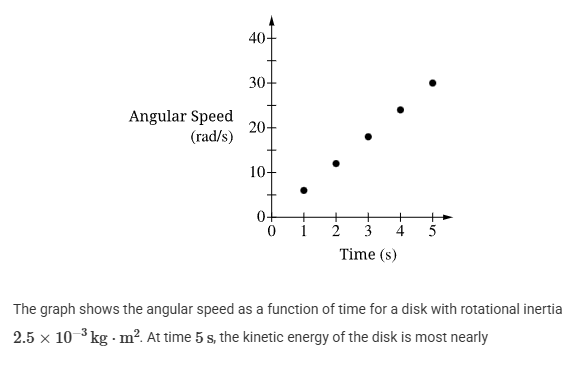
1.1 J

The rotational kinetic energy can be less than, equal to, or greater than the translational kinetic energy
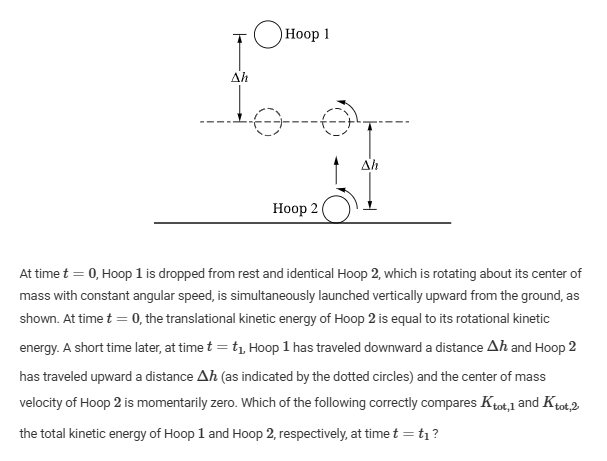
Ktot1=Ktot2

Ktot1<Ktot2<2Ktot1
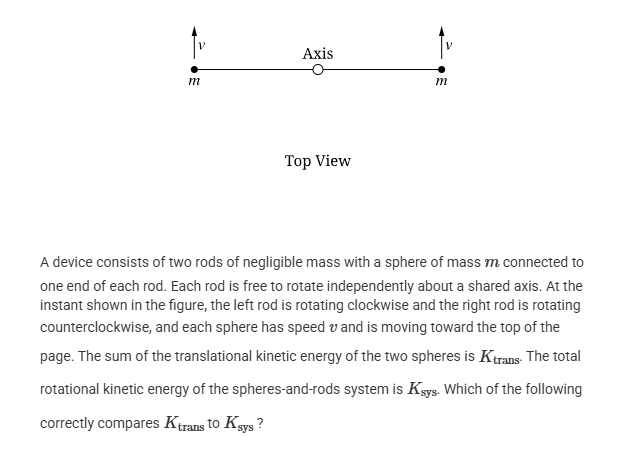
(Ktrans=Ksys)>0
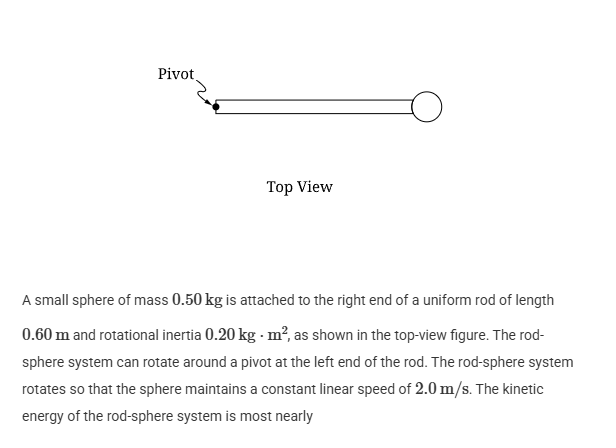
2.1 J
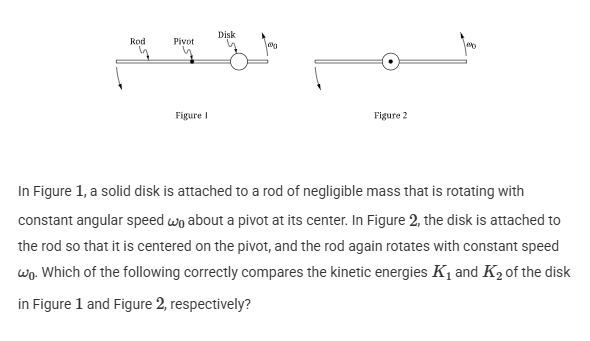
K1>K2>0
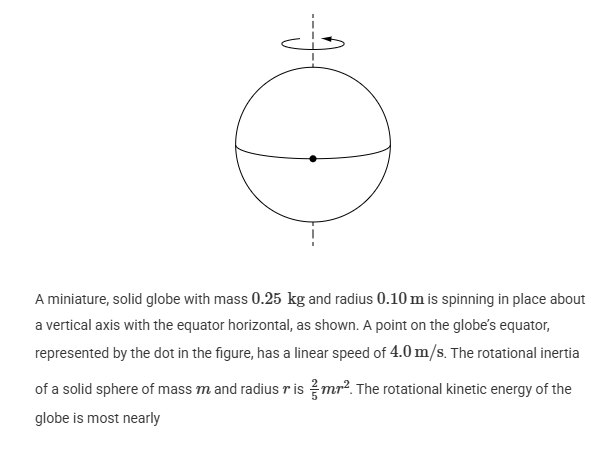
0.8 J
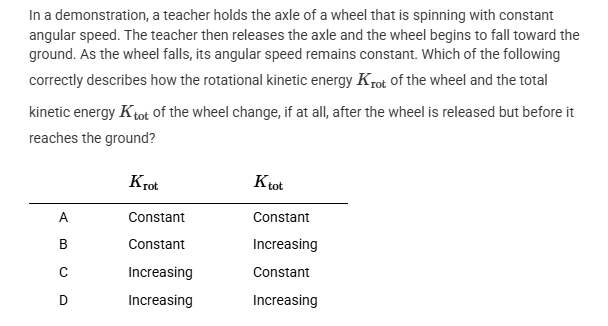
B
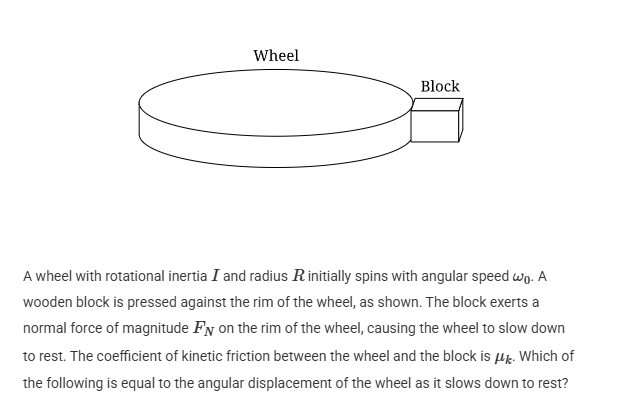

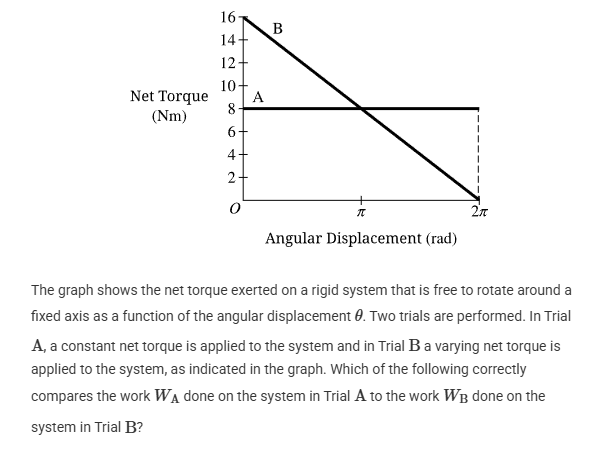
Wb=Wa
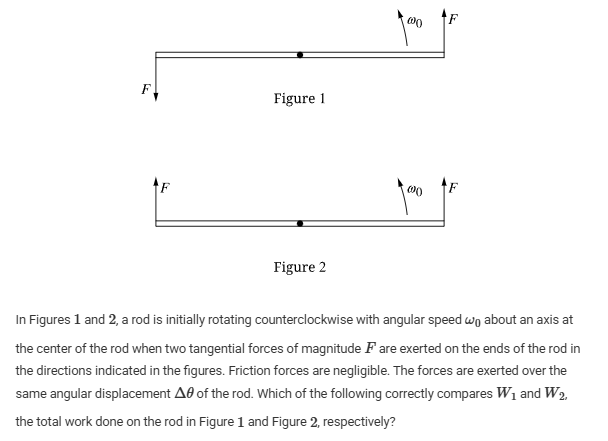
W1>(W2=0)

4:1
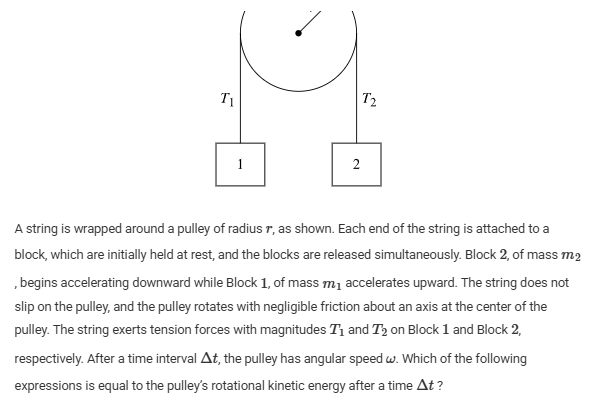
½ (T2-T1)rwt

1:1
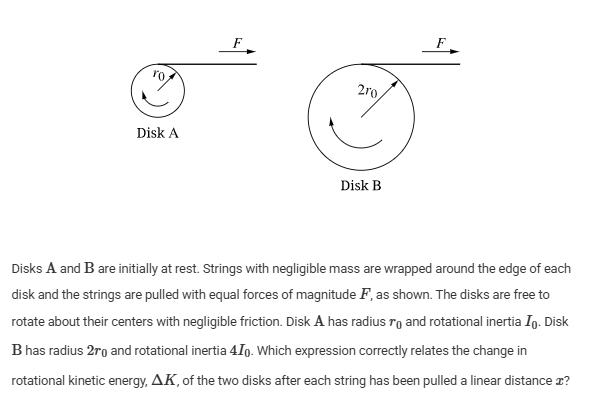
Ka=Kb
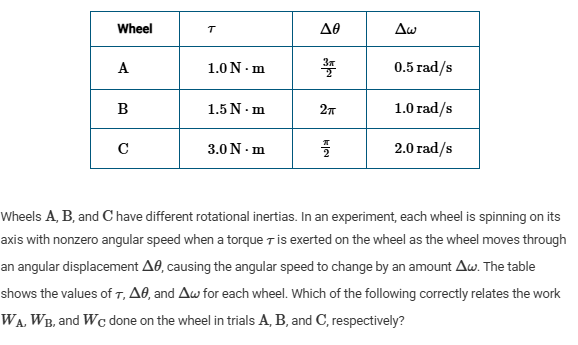
Wb>(Wa=Wc)
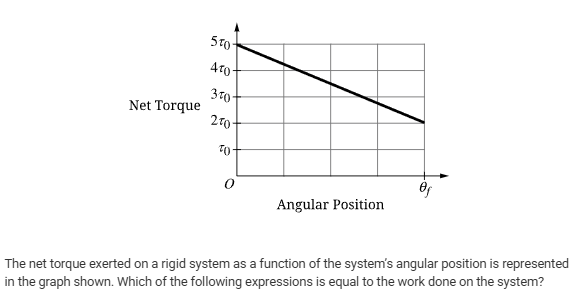
7/2 t0 theta_final
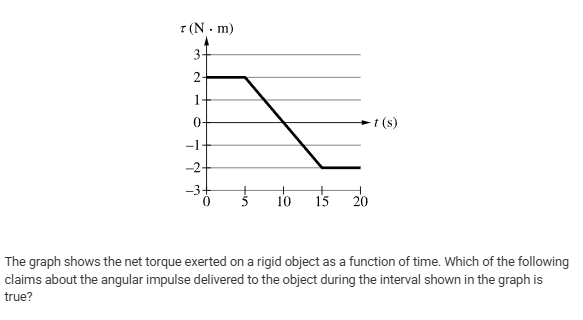
The angular impulse is zero.
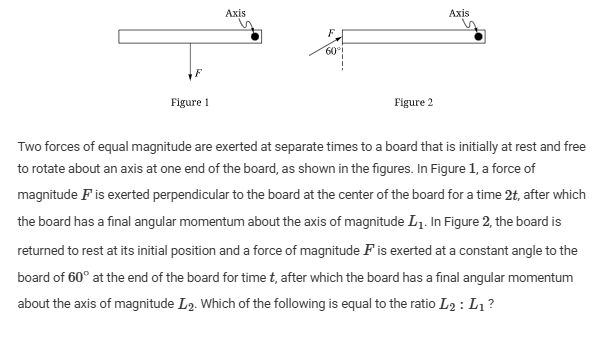
1:2
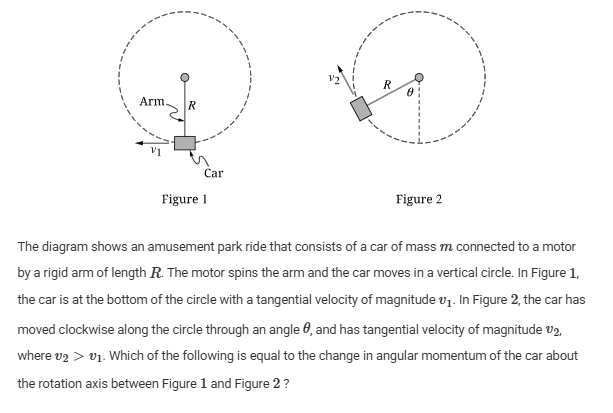
mR(v2-v1)
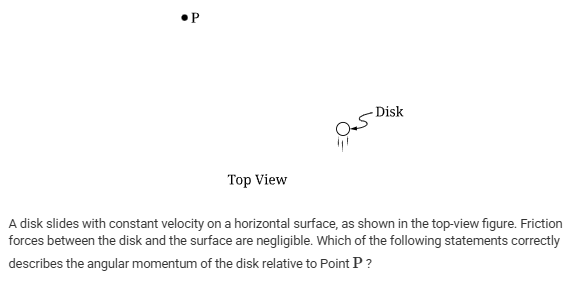
The angular momentum is constant and greater than zero.
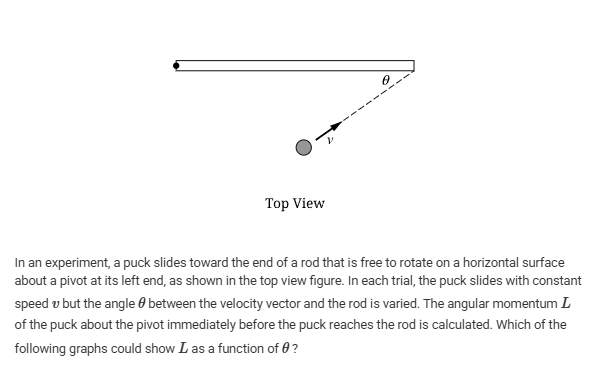
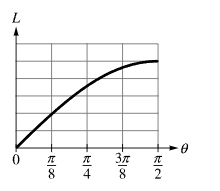
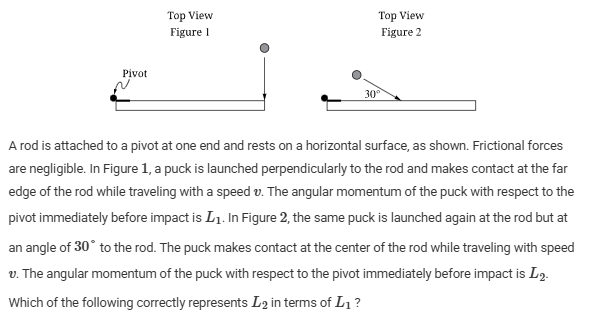
L2=1/4L1

Rmv
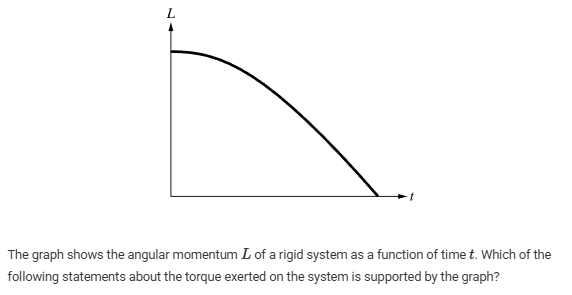
The torque increases in magnitude and is in the opposite direction of the angular momentum.
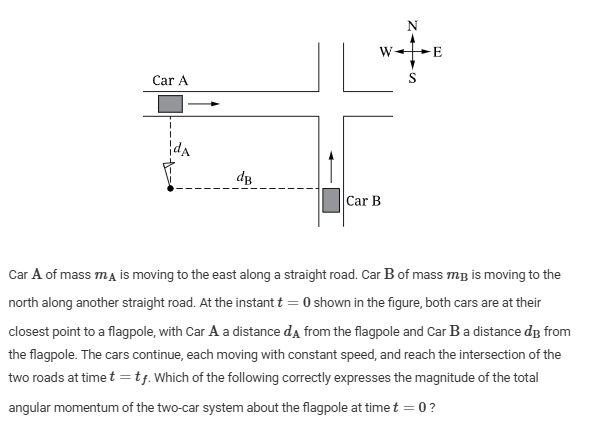

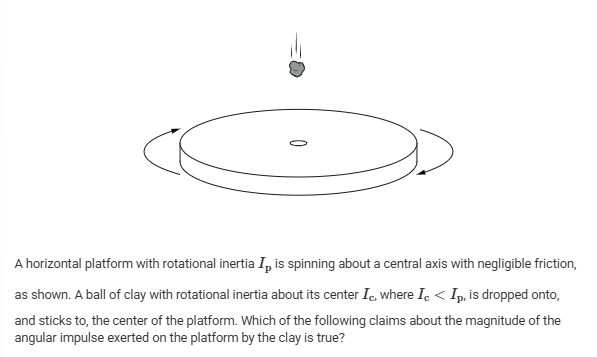
It is equal to the magnitude of the angular impulse exerted on the clay by the platform

The angular speed decreases, because the rotational inertia of the system increases.
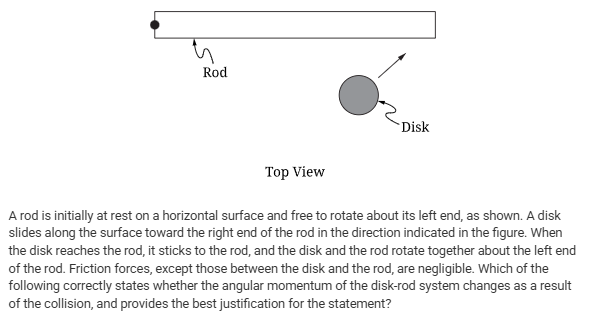
No, because the torque exerted on the rod and the disk are internal to the system
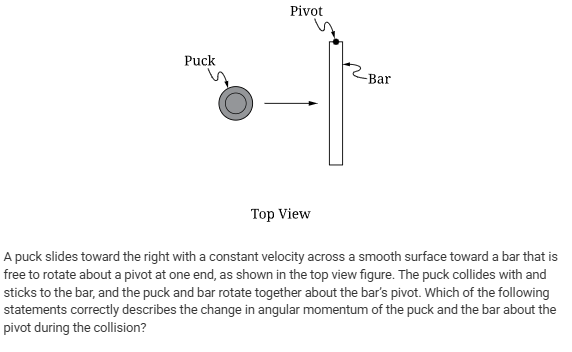
The decrease in the angular momentum of the puck is equal to the increase in the angular momentum of the bar
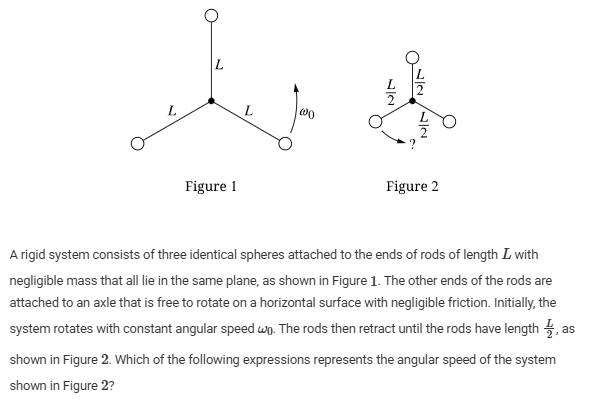
4wo
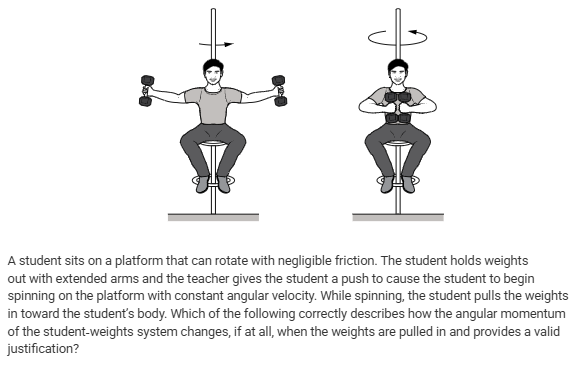
The angular momentum remains constant, because no external net torque is exerted on the system.

wf=wi/3

18:1
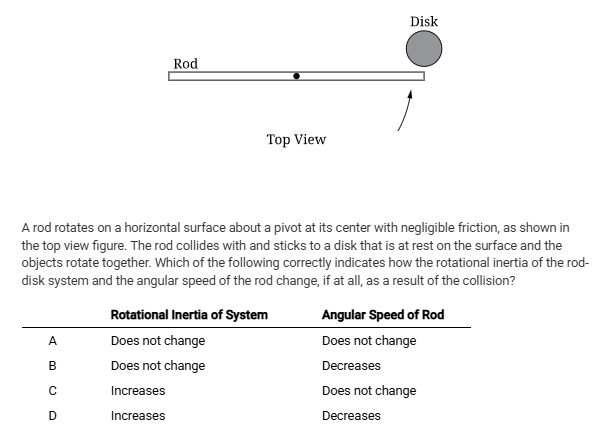
B
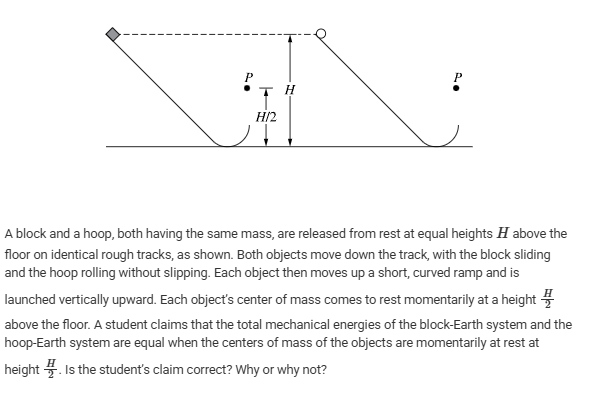
No, because when the center of mass of the hoop if momentarily at rest it has nonzero rotational kinetic energy

sqrt(2/3(Vi²+2gh))
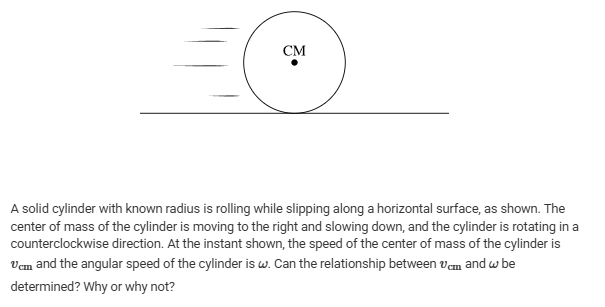
No, because when an object is slipping, the motion of the center of mass and the rotational motion of the object are not related.
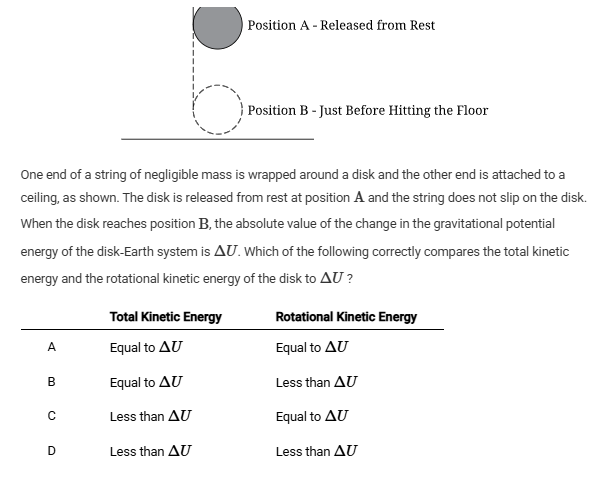
B

¾ mv²
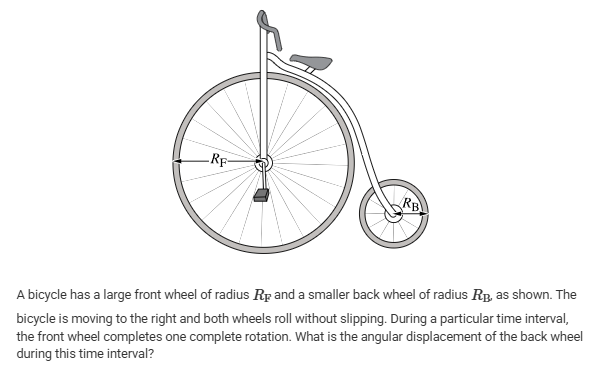
2pi (Rf/Rb)

Ktb>Kta
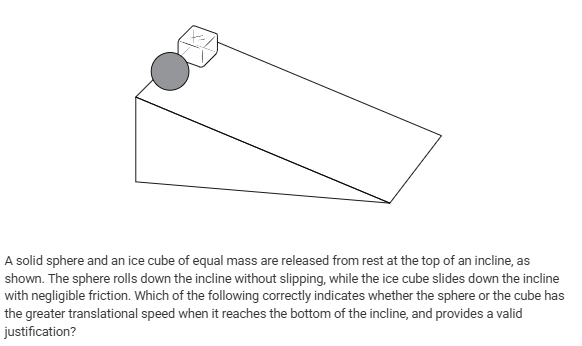
The cube, because the cube’s kinetic energy will all be in the form of translational kinetic energy, while some of the sphere’s kinetic energy will be in the form of rotational kinetic energy
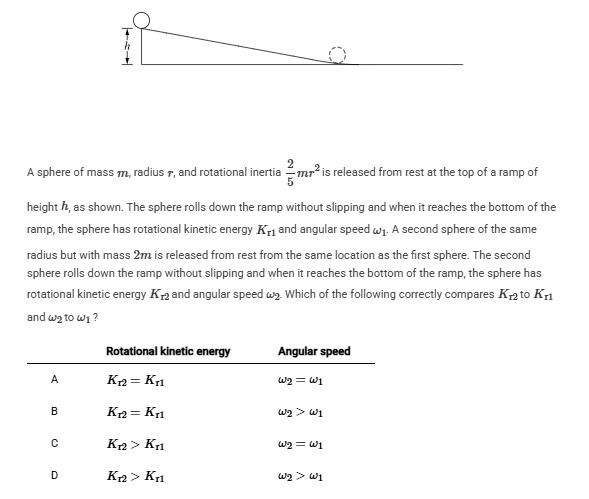
C

Record
2 sqrt(GMe/Re)

sqrt(6GM/R)
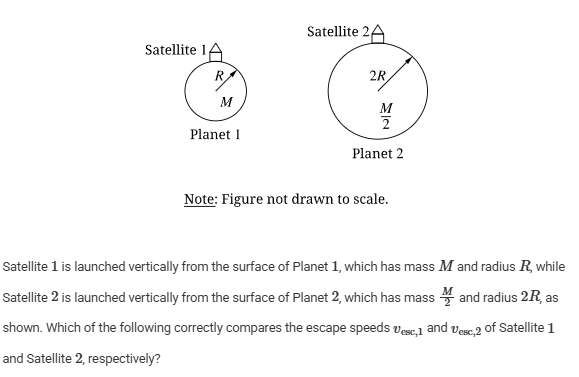
vcsc1>vcsc2

Eq>Ep, because the gravitational potential energy increases with increasing distance from Earth’s center

(Ro²/R²)wo
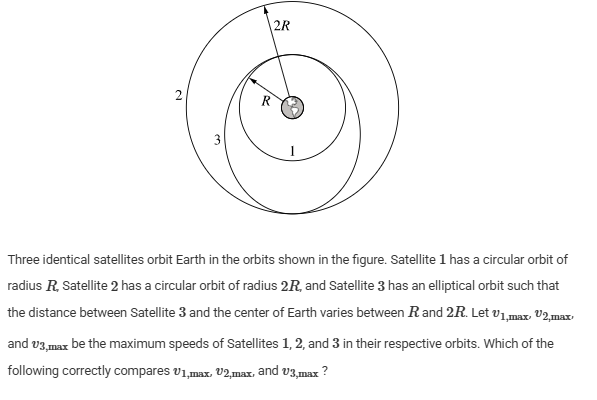
V3max>V1max>V2max
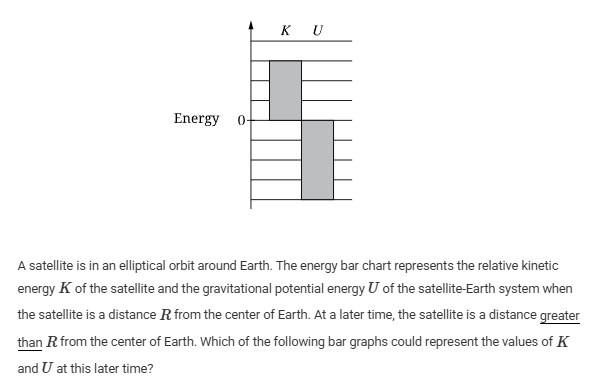
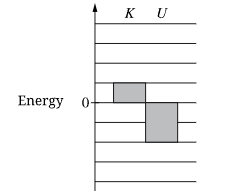
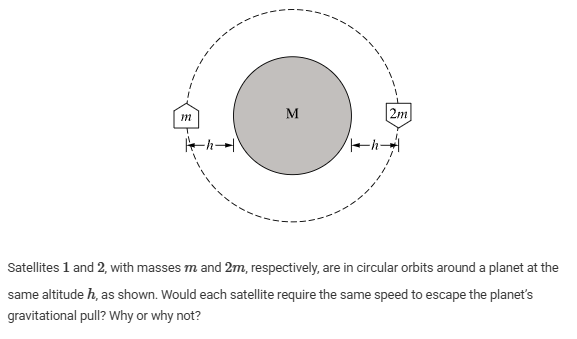
Yes, because the escape speed does not depend on the masses of the satellites.
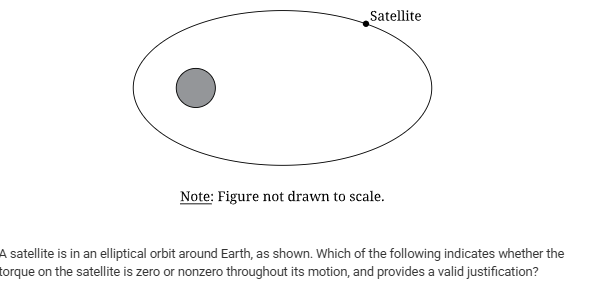
Zero, because the lever arm of the gravitational force on the satellites is always zero
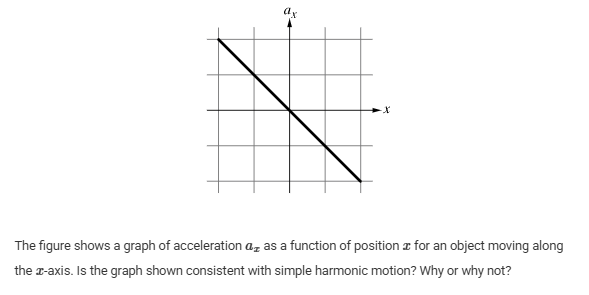
Yes, because the magnitude of the acceleration is proportional to the displacement from equilibrium and its direction is opposite that of the displacement
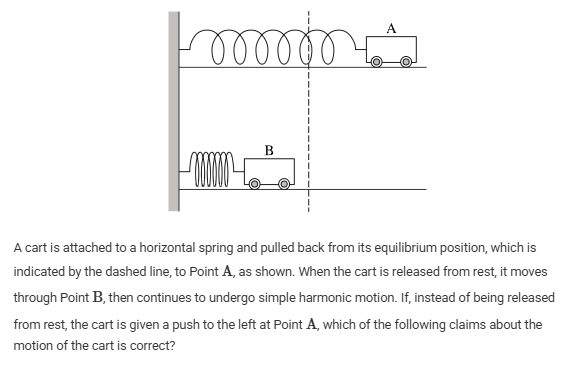
The cart will have the same acceleration at point B as it did in the first scenario
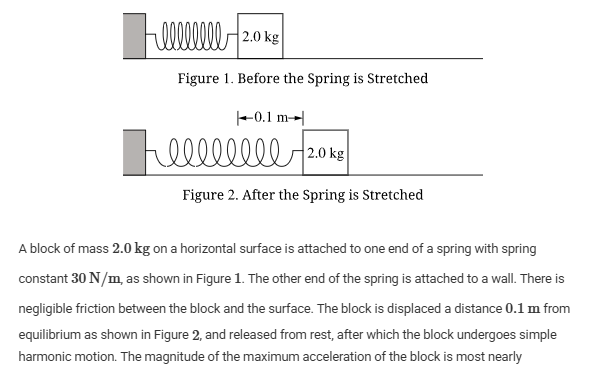
1.5 m/s²

0.65 m

Record
3.0 N/m

Record
Fa>Feq because the force is zero at the equilibrium position and a maximum at maximum displacement
Which of the following types of motion could be described as simple harmonic motion?
A cart sliding back and forth on a surface while attached to a spring
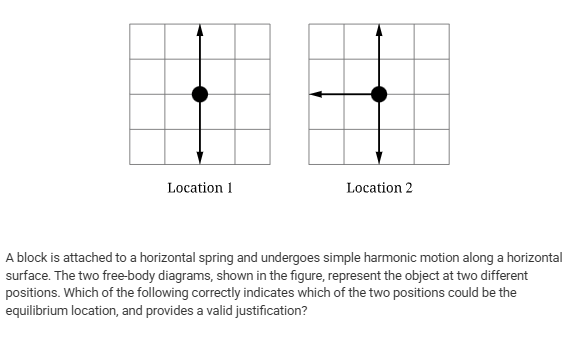
Location 1, because equilibrium position is a location at which the net force is zero.
Which of the following must be true for an object undergoing simple harmonic motion?
The magnitude of the force exerted on the object is proportional to the object’s displacement from equilibrium
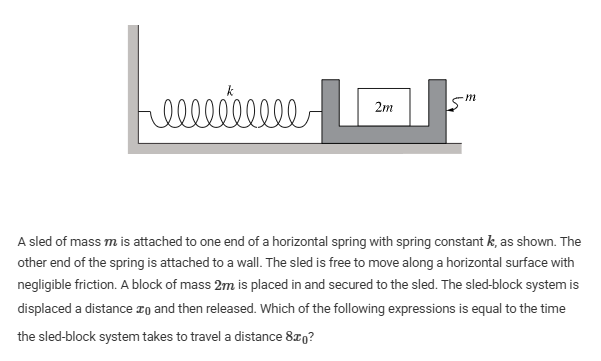
4pi sqrt(3m/k)

No, because the shorter string will cause the pendulum to have a greater frequency

No, because for small angles the period of an object undergoing simple harmonic motion does not depend on the amplitude of oscillation

No, because the ratio m/k will not change if both quantities are quadrupled

4pi²mf²

2:1

1/2pi sqrt(g/L)

1.10fo

16k

Object 1 has half the amplitude and half the period of Object 2
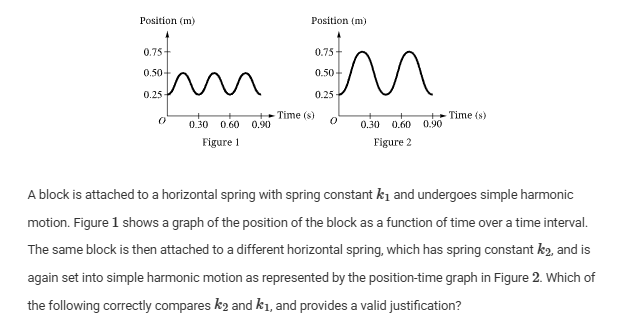
K2<K1 because the period in figure 2 is greater than that in figure 1

x=(0.60m)cos[t/8s]
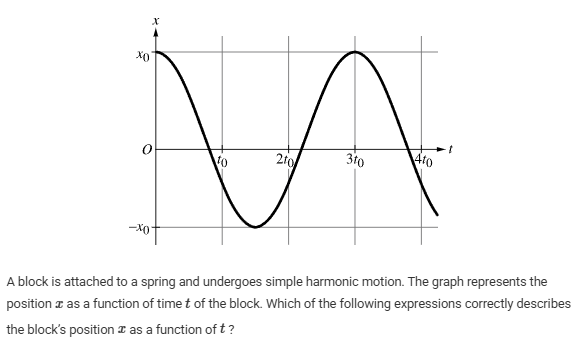
x0cos(2pit/3to)

x=Acos[sqrt(k/m)t]
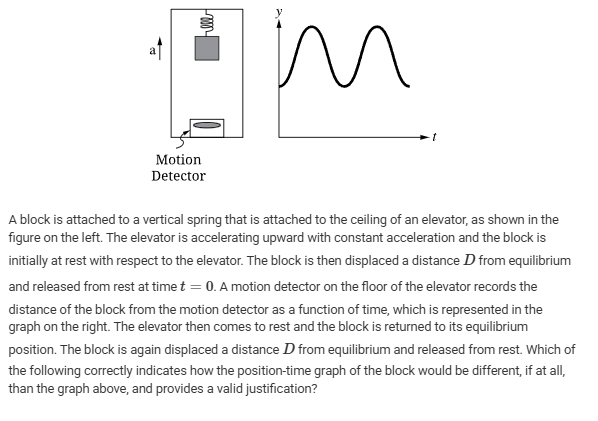
The graph would shift upward, because the equilibrium position has shifted upward and the spring constant remains the same.

1:1

x=xosin(3pit/2to)

Yes, because the period of oscillation for block 1 is less than that of block 2
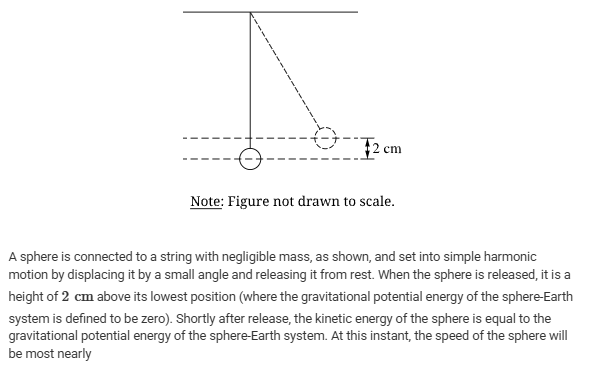
0.45 m/s

Record
1.5 J
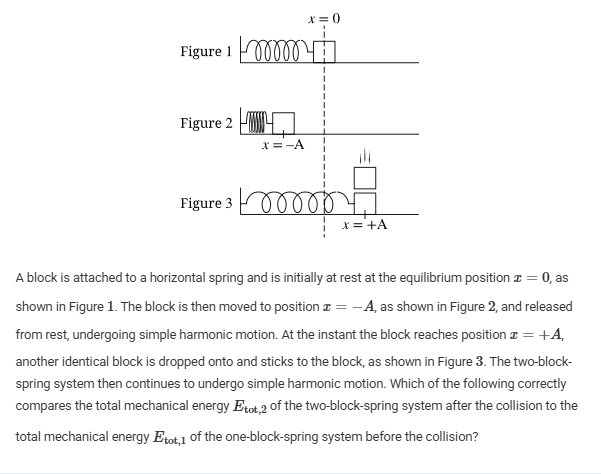
Etot2=Etot1

K1max=K2max; v1max>v2max

0.35 m/s

0.015 J
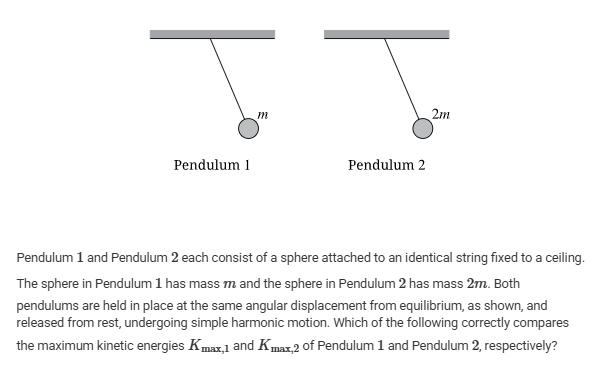
Kmax1<Kmax2
A block-spring system is undergoing simple harmonic motion. Which of the following statements about the relative values of the maximum kinetic and potential energies of the system is correct?
The maximum kinetic energy is equal to the maximum potential energy

K is decreasing and U is increasing
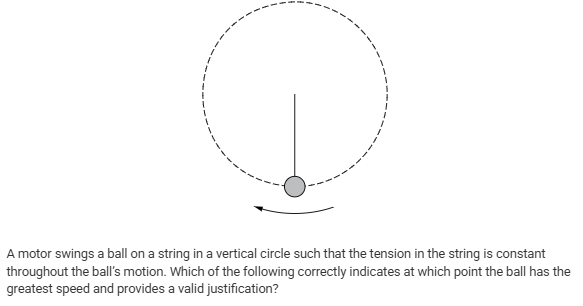
At the topmost point, because the tension force and gravitational force are both directed toward the center of the ball’s motion
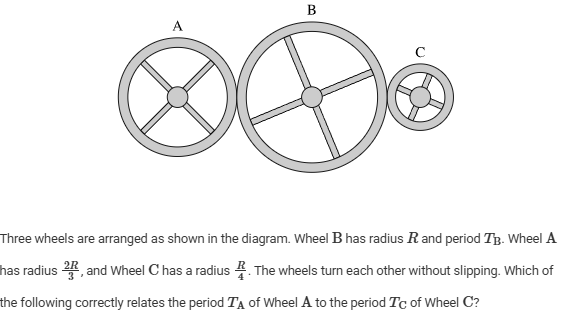
Ta=8/3Tc



v²/rg
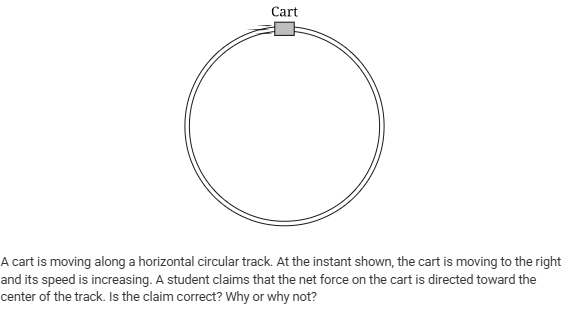
No, because the cart has both a tangential acceleration parallel to the track and a centripetal acceleration perpendicular to the track.

v/sqrt(3)
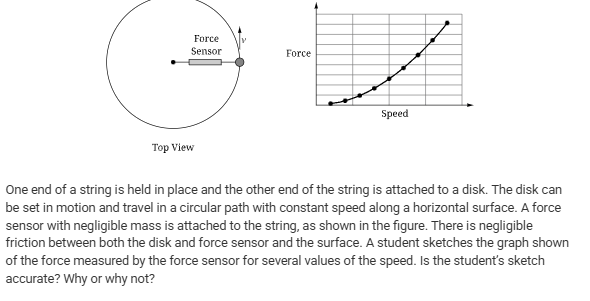
Yes, because centripetal force increases proportional to the square of the speed

4pi²r/T²
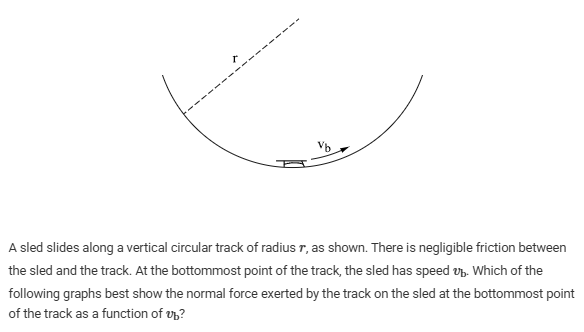
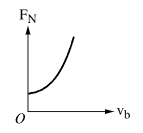
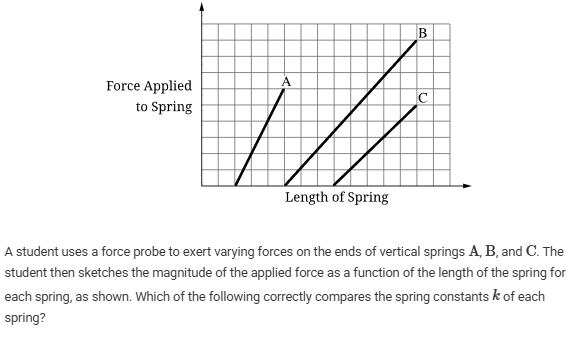
Ka>Kb>Kc